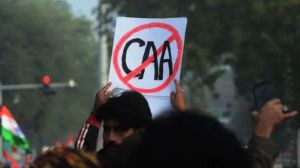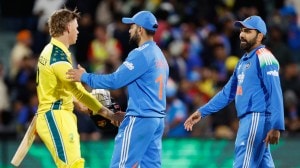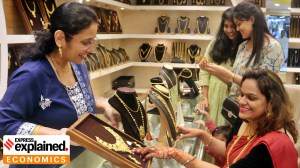Indian Derby has grown in stature
The year 1942: It's war time, with its attendant restrictions on transportation. Race courses are forced to notify a ban on movement of h...

The year 1942: It’s war time, with its attendant restrictions on transportation. Race courses are forced to notify a ban on movement of horses between centres. Shipments of imported race horses are curtailed. A visionary, who has the foresight to encourage the development of the Indian breed, comes on the scene. His name: K.M Munshi, finance minister of the Bombay Province. He proposed a series of Classic races, modelled on the English pattern. The lynch-pin? A definitive event over the true classic distance of one and-a-half miles, for four-year-olds, called the Indian Derby.
February 6, 1943: The first-ever Indian derby is run. Amidst wild cheering, the Maharaja of Baroda’s exceptional filly Princess Beautiful, who had already won the Indian 1000 Guineas and the Indian 2000 Guineas, completes a clean sweep of the only three Classics run that year, the remaining pair being added the following season.
The sporting Indian Princess dominated the remainder of the `forties’ with their runners annexing most ofthe stakes. Alas, the next decade saw Indian breeding at its nadir, following the proposal to ban betting on racing. Fortunately, this threat did not materialise, but the breeding industry suffered serious damage. This can be judged from the relatively slow times for Derby winners of that era, the worst being the 1952 renewal, when Martial Law cut the slowest timing ever recorded, a leisurely 2 minutes 30 seconds.
In the `sixties’, further consolidation followed as the quality of the Indian horse steadily recovered to pre-war levels. However, there were not real many sparks, as the nation was in the grip of socialism and foreign exchange restrictions. In 1962, for the first time, an Indian stallion sired a Derby winner `Loyal Manzar’ (by Star of Gwalior). He was the first to break the 2:10 barrier.
By the `seventies’, the Indian derby had become famous as the Blue Riband of the Indian turf and an absolute "must" as a social occasion. It was a decade of contrasts while in 1975 a non-winner Pyare Miyashocked, just three later Manitou scored effortlessly by 10 lengths, the widest margin ever. What’s more, Manitou stopped the clock at an astonishing 2:31.88.
Incidentally, this was also the era of giants of Indian turf like Squanderer and Royal Tern, both of which trounced their rivals in their respective years.
A more liberal import policy in the `eighties’ gave the necessary fillip to bloodstock breeding in the country. Further improvement in the timings are proof of the rise in standards each winners since 1983 has done 2:35.0 or better, while the most recent hero, Star Supreme, traversed the distance in a race record.
A new element was introduced by the UB Group, when the Indian Derby was sponsored for the first time in 1985, by their flagship company McDowells. With ever-increasing munificent contributions from the sponsors, the race has jumped in value annually, which is entirely in keeping with its tradition and prestige. So much so that last year’s winner took home Rs 26,78960 along with ahandsome trophy worth Rs 75,000.
Meanwhile, the princes have faded away to be replaced by tycoons. Business magnates like Vijay Mallya, Deepak Khaitan and MAM Ramaswamy now dominate racing just as Baroda, Gwalior and Kashmir did in the `forties’. Although, nowadays, top foreign jockeys prefer wintering in Hong Kong, Japan and Dubai, enough make the trip to the Mahalaxmi Course on the first Sunday in February to make the occasion one of glamour, excitement and thrills. Who will score in 1999? Stay tuned… (Professional Management Group).



- 01
- 02
- 03
- 04
- 05




























